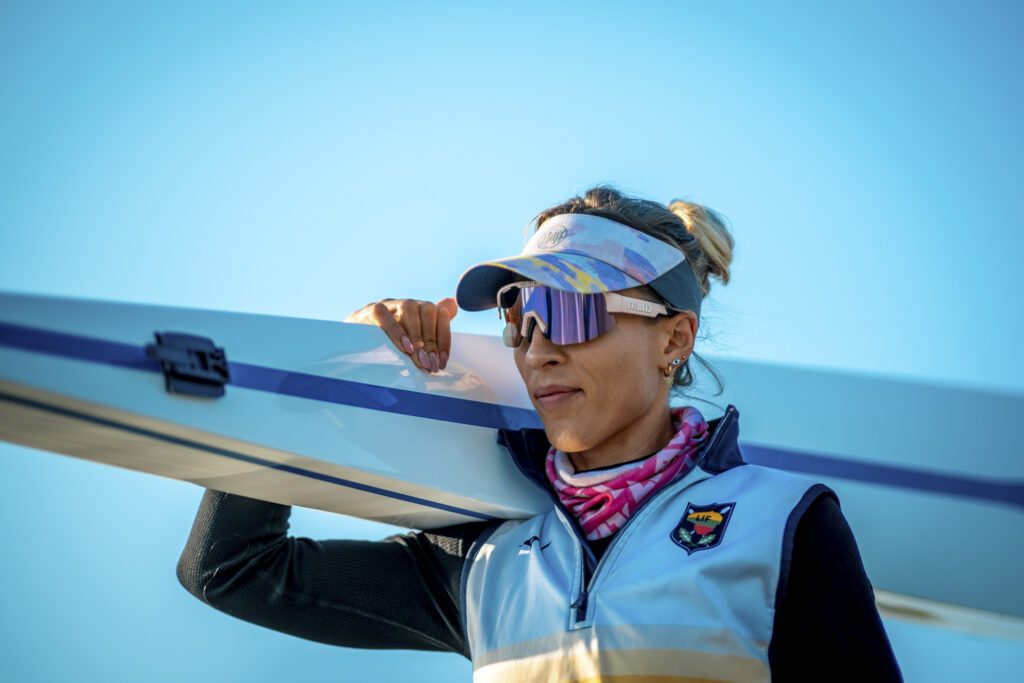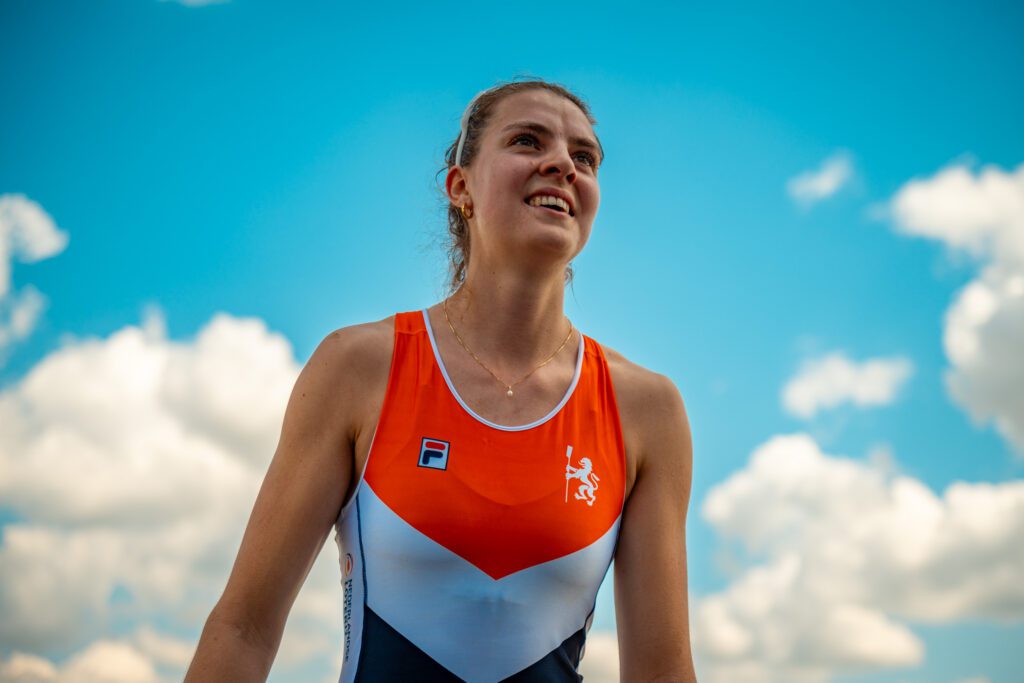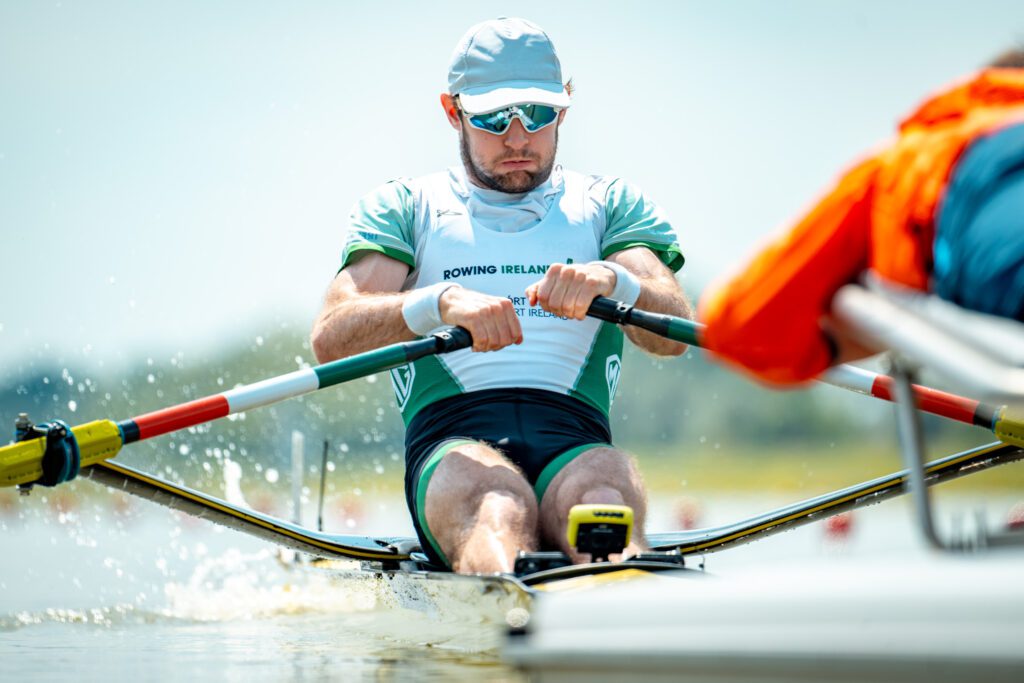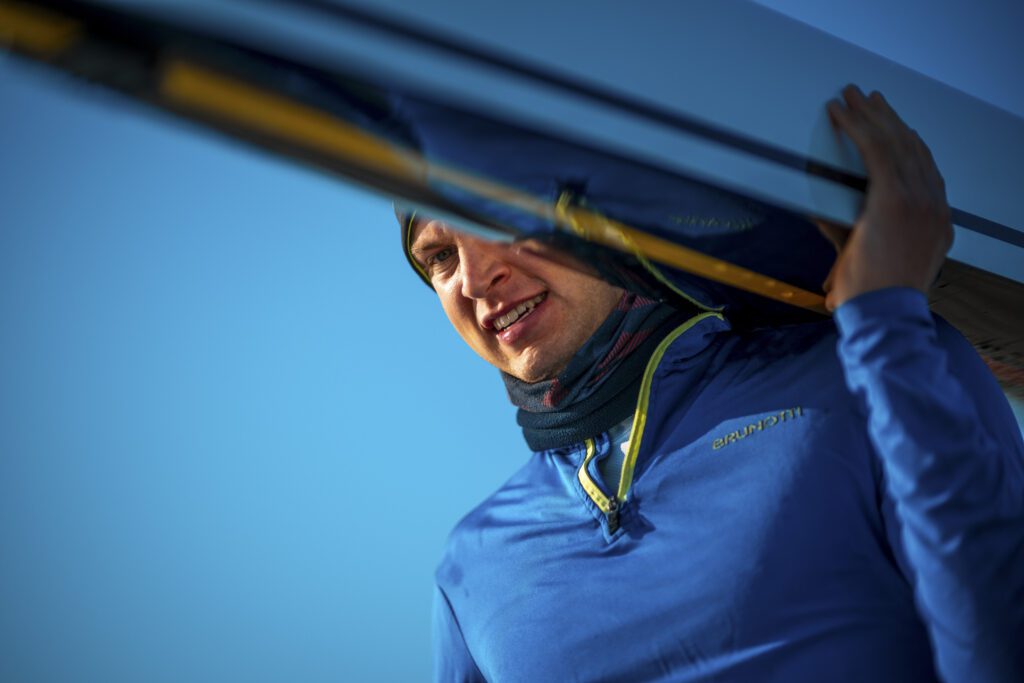Every year The Head Of The Charles Regatta weekend sees a small but dedicated team of volunteers carry out the considerable task of placing 350 buoys every 20 or 30 meters along the HOCR’s 4,800 metre course. With wind, current, and variable water levels to contend with, it’s a logistical feat that has been honed over decades, thanks largely to the brilliant mind of one individual.
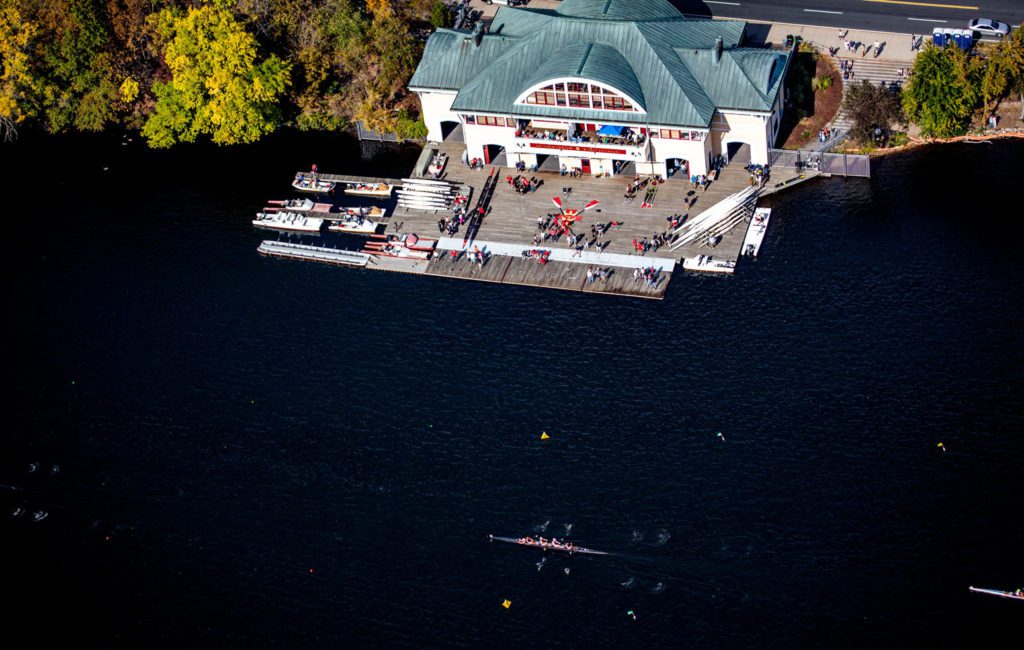
Photo BU Boathouse
“In 1965, at the first HOCR, organizers used old recycled Clorox bleach bottles tied to bricks to mark the course,” says current course committee co-chair Michael Todd. “Back then they sent around a notice to club members to start hoarding their empty Clorox bottles so that by the next year they would have the several hundred they needed to mark the course.”
“Course setters would load up their launches with bricks, Clorox bottles, and string, and head down stream to start laying the course. One by one they would drop a house brick tied to string over the side to measure the depth, then cut the string at water level and tie it to a Clorox bottle all while at the mercy of the stream and the current. It took them all day, and so it went for 15 years.”
Then came along an architect from Manchester, Massachusetts by the name of Sherry Proctor. A keen sculler for Cambridge Boat Club, Proctor took one look at the Clorox bottle course setting method in 1979 and immediately thought ‘there has to be a better way’.
“His first challenge was to design a buoy that would meet the many requirements of the HOCR course,” explains Todd. “What he came up with was a six-inch thick polyethylene foam cylinder, cut with a band saw down to 3-inch lengths. They had just the right visual profile that he needed; they were soft and spongey so they would not cause damage if you rowed into them, and you could push and glue pegs into the bottom to wind the anchor string around to store them neatly. They were also small enough that volunteers could reach in and pluck them out with their hands at the end of the day with very little effort.”
“The next thing he had to work out was the perfect anchor to tether them to,” says Todd. “Something heavy enough to hold the buoy in place, but easy enough to pull out of the muck at the bottom of the river.”
There were a few iterations (many of which are now used as door stops in the Cambridge Boat Club boathouse) but what they finally settled on was 2½” OD Schedule 40 PVC pipes, 9¼” long, filled with concrete that weighed about 5lbs. “They were just the right diameter and length that you could fit 14 of them neatly in plastic milk crates.” Which was ingenious in itself says Todd, because “the separator in the crates prevented the volunteers from skinning their hands when they picked them up. You could then stack the crates on top of each other neatly and easily – he really thought of everything.”
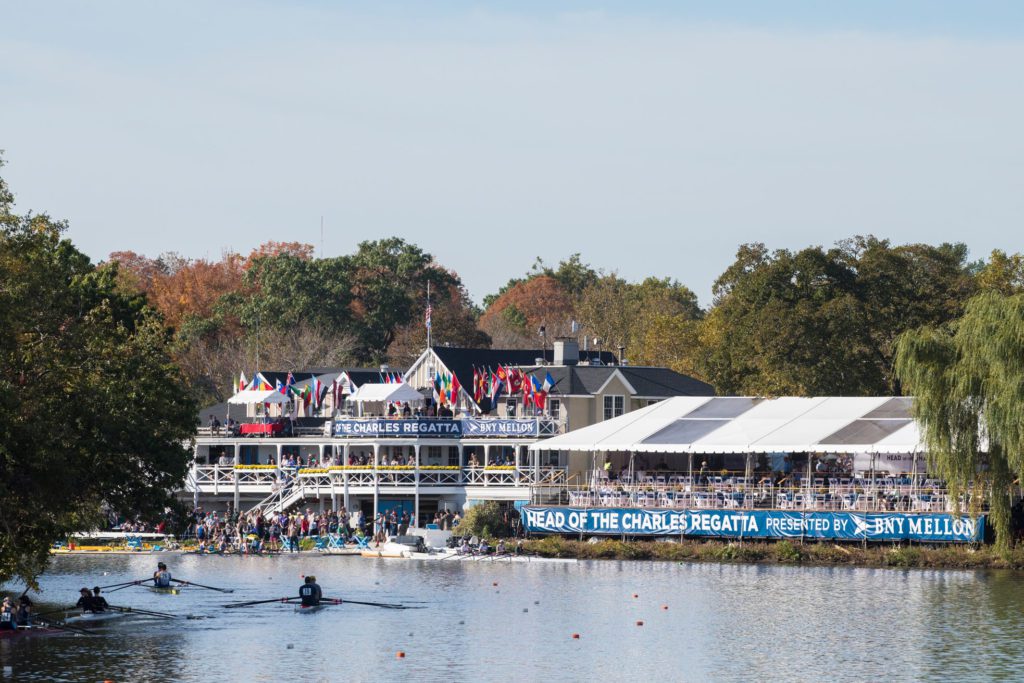
Photo CBC Boathouse on The Charles River
Proctor then needed to work out how long to make the tethers for the anchors to suit the varying depths along the course. “Back then there was no budget – the regatta had no money, but Proctor did have some friends at the Manchester Yacht Club,” says Todd, “so he borrowed their depth sounder, drove it down the length of the course and produced a map charting the depth of the river at every point a buoy needed to be placed. He then cut the tethers to the required lengths, attached them to the buoys, writing the tether length on the buoy underside.”
One more consideration Proctor had to take into account was the fluctuation in water levels. The local authorities could control the flow of the river which could vary the depth by up to 12 inches over the course of the regatta weekend. He got round this by simply switching the string to elasticated tethers.
Thanks to Proctor’s work, it now takes two crews in two launches a little over 2 hours to lay the entire course and roughly the same amount of time to collect it again at the end of the regatta.
Proctor died in 2005, a year after retiring from the course committee that he had been part of for 25 years. To this day, the Head Of The Charles organizers still use Proctor’s method, while many of the buoys and anchors remain the original polyethylene discs and PVC tubes made by his own hand.
